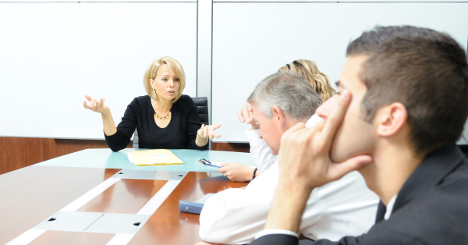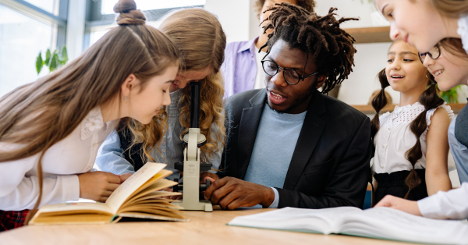How to Improve Classroom Behavior Without Public Shaming: 7 Proven
Strategies

Improve Classroom Behavior Without Public Shaming
Improve Classroom Behavior Without Public Shaming
Improve Classroom Behavior Without Public Shaming
Improve Classroom Behavior Without Public Shaming
Improve Classroom Behavior Without Public Shaming
Improve Classroom Behavior Without Public Shaming
Creating a positive classroom environment is crucial for effective learning, but managing student behavior can be challenging. Public shaming, though sometimes used as a disciplinary method, can have detrimental effects on students’ self-esteem and overall classroom dynamics. Fortunately, there are several strategies educators can use to improve classroom behavior without resorting to public shaming. This article outlines seven proven methods to foster a respectful and conducive learning atmosphere.
Understanding the Impact of Public Shaming
Public shaming involves criticizing or disciplining students in front of their peers. This method can lead to negative outcomes such as:
- Decreased self-esteem
- Increased anxiety and stress
- Damaged student-teacher relationships
- A negative classroom atmosphere
Research shows that students who experience public shaming are more likely to disengage from school and exhibit behavioral problems. Therefore, it is essential to find alternative methods that promote positive behavior without causing harm.
Establishing Clear Expectations
Setting Classroom Rules
One of the most effective ways to improve classroom behavior is by establishing clear and consistent rules. Here’s how to do it:
- Collaborate with Students: Involve students in creating classroom rules to ensure they feel a sense of ownership.
- Be Specific: Clearly outline what behaviors are expected and what the consequences are for not adhering to them.
- Consistent Enforcement: Apply rules consistently to avoid confusion and maintain fairness.
Communicating Expectations
Effective communication is key to ensuring students understand and follow classroom rules:
- Visual Aids: Use posters and charts to display rules prominently in the classroom.
- Regular Reminders: Reinforce rules regularly through discussions and reminders.
Positive Reinforcement
Reward Systems
Positive reinforcement encourages good behavior by rewarding students for meeting expectations. Some strategies include:
- Praise: Offer verbal praise for specific behaviors.
- Rewards: Implement a reward system, such as stickers or extra recess time, to motivate students.
- Certificates: Recognize students’ efforts with certificates or awards.
Behavior Charts
Behavior charts can track and reinforce positive behavior over time:
- Individual Charts: Track each student’s progress and reward them for meeting goals.
- Class Charts: Encourage collective responsibility by rewarding the entire class for positive behavior.

Implementing Restorative Practices
Restorative practices focus on repairing harm and restoring relationships rather than punishment. These practices include:
- Circles: Use restorative circles to allow students to discuss issues and resolve conflicts collaboratively.
- Mediation: Facilitate peer mediation to help students resolve disputes and understand the impact of their actions.
- Restorative Conversations: Engage in one-on-one conversations with students to discuss behavior and find solutions together.
Building Strong Relationships
Teacher-Student Relationships
Strong relationships between teachers and students are fundamental to a positive classroom environment:
- Show Empathy: Understand and respect students’ perspectives and feelings.
- Be Approachable: Create an open-door policy where students feel comfortable discussing their concerns.
- Personal Connections: Take an interest in students’ lives outside the classroom to build trust and rapport.
Peer Relationships
Promoting positive peer relationships can also enhance classroom behavior:
- Team-Building Activities: Organize activities that foster teamwork and cooperation.
- Peer Support: Encourage students to support each other academically and socially.
Creating a Supportive Classroom Environment
Physical Environment
The physical setup of the classroom can influence behavior:
- Seating Arrangements: Arrange seats to facilitate interaction and minimize distractions.
- Learning Centers: Create designated areas for different activities to keep students engaged and organized.
Emotional Environment
A supportive emotional environment promotes a sense of safety and belonging:
- Encouragement: Regularly encourage and support students, recognizing their efforts and achievements.
- Respect: Foster a culture of respect where students feel valued and heard.
Incorporating Social-Emotional Learning
Social-emotional learning (SEL) helps students develop the skills needed to manage emotions, build relationships, and make responsible decisions. Implementing SEL can significantly improve classroom behavior:
- SEL Curriculum: Integrate SEL lessons into the curriculum to teach skills like empathy, self-regulation, and conflict resolution.
- Mindfulness Practices: Incorporate mindfulness activities, such as deep breathing or meditation, to help students manage stress and stay focused.
- Role-Playing: Use role-playing exercises to practice social skills and problem-solving.

FAQs
Q: How can I address disruptive behavior without embarrassing the student?
A: Address disruptive behavior privately whenever possible. Use calm, non-confrontational language and focus on the behavior, not the student.
Q: What are some effective rewards for positive behavior?
A: Effective rewards include verbal praise, extra free time, small prizes, or special privileges such as being a class helper.
Q: How can I ensure consistency in enforcing rules?
A: Consistency can be achieved by clearly defining rules, applying them uniformly, and regularly reviewing them with students to ensure understanding.
Q: How do restorative practices work in the classroom?
A: Restorative practices involve activities like circles or mediation that focus on resolving conflicts and repairing harm through open communication and mutual agreement.
Q: What role does social-emotional learning play in behavior management?
A: SEL teaches essential skills for emotional regulation, empathy, and decision-making, which can lead to improved behavior and a more positive classroom environment.
Conclusion
Improving classroom behavior without public shaming is not only possible but also essential for creating a positive and productive learning environment. By establishing clear expectations, using positive reinforcement, implementing restorative practices, building strong relationships, creating a supportive classroom environment, and incorporating social-emotional learning, educators can effectively manage behavior while fostering a respectful and inclusive atmosphere.
[bdp_post_carousel show_tags=”false” show_comments=”false” show_category=”false” dots=”false” limit=”10″ orderby=”rand”]
You can signup for free
